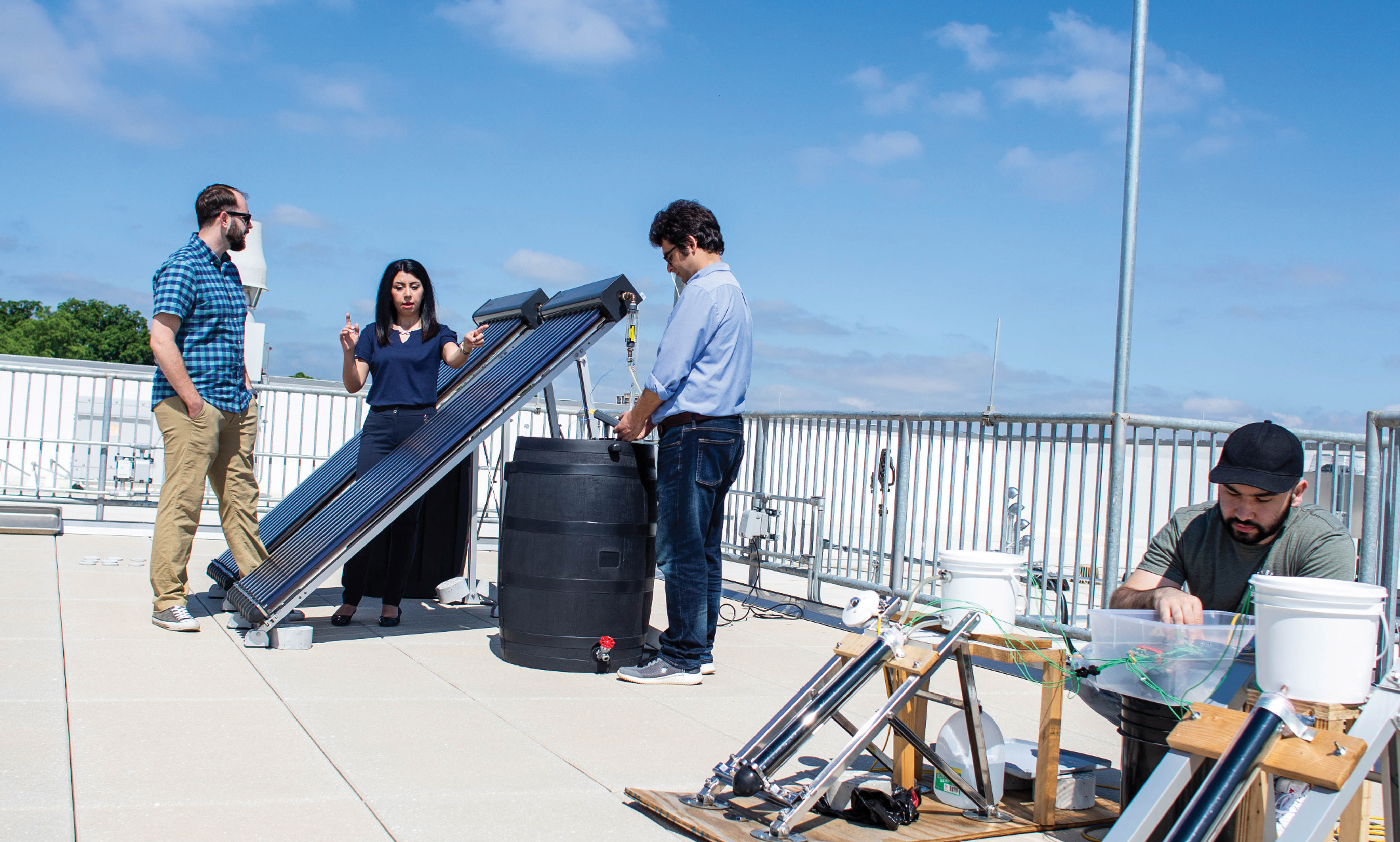Most days, Assistant Professor Sarvenaz Sobhansarbandi, Ph.D., keeps her eyes on the sky.
Sobhansarbandi has spent her career studying solar energy. Her research focuses on a type of solar thermal collector called an evacuated tube collector (ETC). More specifically, she is interested in how this type of collector can make water heating systems more efficient.
The Robert W. Plaster Free Enterprise and Research Center includes two unique spaces for Sobhansarbandi and her students: the Evergy Advanced Renewable/Thermal Energy (ART-E) Lab and the accompanying Evergy Renewable Energy Roof Deck.
Since the completion of the Plaster Center, Sobhansarbandi and her students have spent much of their time on the roof and the lab, working to learn more about ETCs and how we can best utilize them.
How is the Plaster Center enhancing your research with ETCs and solar water heating?
The Evergy Renewable Energy Roof Deck was designed for maximum solar gain exposure. It uses local, easily configurable, leading-edge technology to test both small- and large-scale ETC solar water heating systems. The space will also allow us to get baseline results for Kansas City weather conditions and optimize the system’s functionality to achieve higher efficiency.
A low-voltage conduit connects the roof to the lab below, allowing us to monitor the system and data connection devices. Outside of the Renewable Energy Research Lab, the new 3D printing lab and Innovation Studio will allow us to fabricate prototypes in-house and move them straight upstairs for testing.
Are you working with any new technologies in your new spaces?
The 5,000-square-foot roof deck gives us plenty of space for a new full-scale solar water heating system. In the future, we plan to integrate photovoltaic arrays and a weather station to track comprehensive, real-time conditions. Currently, we are able to monitor solar radiation intensity using Pyranometers on the roof, connected directly to the lab space.
How have your students responded to the new research lab?
My graduate and undergraduate students are very excited as the new lab gives them the opportunity to perform research in an even more well-equipped environment. Here are some of their individual reactions:
- “Moving into this new lab is great as we now have a more sophisticated facility to do hands-on experimental research.”
- “It’s wonderful to have more space to work on our research and collaborate comfortably.”
- “The new lab is equipped with high-tech devices and a big glass window, which makes it a more visually and thermally comfortable place to monitor the technology.”
- “The new facilities have given me the opportunity to pursue my research in avenues that I previously thought were impossible.”
Does the new space enhance your teaching?
Absolutely! My mechanical engineering students get to see some real-world applications of heat transfer in action in our solar water heating system setup, as well as all of the instrumentation used to monitor the equipment and collect data for our research.
My colleagues are also able to show examples of material analysis using the Thermogravimetric Analyzer and Differential Scanning Calorimeter in our lab. On top of all that, it’s a great excuse to take students outside for fresh air and sunshine to look at cool technology and the view of downtown KC!
How does your new lab compare to those of schools across the country?
Having 1,000-square-feet of interior space and direct access to the roof deck is a distinct feature. The dedicated space to perform field testing gives us the potential to cross-validate our simulation modeling results without the need for travel to other available research sites. In addition, the high-end video conferencing technology has been a huge benefit when collaborating with other researchers and staying connected.
What is the next step in your research?
Next steps include experimental investigation of modified large scale ETCs by applying preliminary findings from small scale analysis with the goal of efficiency enhancement. Additionally, development of control systems to automate and optimize the system functionality are being studied.

